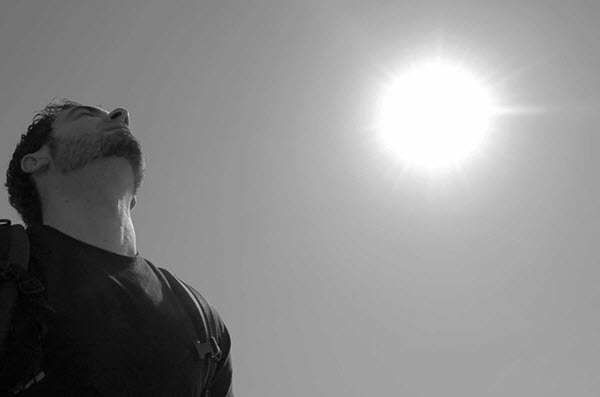How NOT To Breathe When You Feel Anxious
By Matt Pocock
August 31, 2017 • Fact checked by Dumb Little Man

‘If you feel nervous, just take a few deep breaths. In, then out. In, then out.’
This feels like an obvious advice. Everyone knows that slow, deep breathing can calm the heart rate and lower feelings of anxiety. You may have tried this breathing technique to calm your nerves at a job interview, a presentation or a date.
It’s also obvious how to breathe. It’s intuitive, after all.
As you breathe in, the intercostal muscles expand, the ribs rise and the shoulders rise and spread. Then, as you breathe out, it all relaxes. You inhale up and then exhale down.
Breathing expert Belisa Vranich says that 9 out of 10 people breathe this way, using what she calls ‘vertical breathing’.
The Bad Things About Vertical Breathing
Unfortunately, vertical breathing happens to be tremendously inefficient.
It uses enormous muscular effort. The rib cage is heavy and your neck and back muscles take most of the weight. The effort of hiking up the rib cage on inhalation can cause neck and back pain.
That extra effort stimulates the ‘Vagus’ nerve, the ‘wanderer’ nerve that travels from the gut to the brain. The brain uses the wanderer nerve to check up on how the body is feeling. When you’re breathing vertically, the body sends up ‘danger’ signals to the brain.

So, just breathing badly can elicit feelings of anxiety.
Vertical breathing also robs your brain of oxygen. Think of the shape of your lungs. They’re pear-shaped, with the large parts at the bottom. Raising the ribs fills the thin, narrow parts of the pear, leaving the oxygen-rich bottom unexpanded.
Oxygen energizes your brain, blood, and muscles. Visitors to London’s ‘oxygen bar’ -the UK’s only licensed vendor of oxygen- can attest to that.
If your friend feels anxious, tell him to ‘take a deep breath’. Their shoulders rise, their ribs expand, their neck strains, their vagus nerve pings ‘danger’ and their brains de-oxygenate. Most likely, they’ll feel more anxious after that.
So, what could you tell your friends to do differently?
See Also: Suffering From Anxiety? This Is How I Deal With Mine
Diaphragmatic Breathing
When in doubt, trust Sesame Street. In 2012, they released ‘Belly Breathe’, featuring a rabid ‘monster’ Elmo assisted by Common and Colbie Caillat. In it, they place Elmo’s hand on his belly. He breathes, his belly moves and he returns to his normal self.
As you breathe out, the belly deflates inwards. The movement is horizontal, not vertical. This is good breathing.
But, I have a small critique of the Sesame Street method. Their lyrics go: ‘put your hands on your belly and you slowly breathe in’. This seems perfectly innocuous on the surface, but good teaching can sometimes be about changing your wording.
The instruction to ‘breathe in’ is dangerous. Watch the kids in the Sesame Street video. Their hands are on their belly, but they’re breathing with their shoulders. A producer told them to ‘breathe in’, and their brain went ‘Oh, I know how to do that!’ and they breathed badly. In my sessions, most people do the same.
So, it’s not enough to know the technique. We need to reframe how we think about breathing and that’s where I’d like to make my contribution.
When you feel anxious, don’t take a deep breath in. Breathe out first.
In Summary
Breathing out is very hard to get wrong. Your belly always deflates. You’ll feel it going back towards your spine if you breathe out firmly enough. Some people say “But I need to breathe in first. There’s no air in my lungs!”.
That’s not true. Only puncturing the lungs can empty them. You have a little bit of air in them all the time. It’s called the Resting Expiratory Level and you can use it to breathe out.
And when you’ve breathed out all of your air, don’t think ‘breath in’. Just think ‘relax’ and notice the air passively returning to your lungs. Notice the belly relaxing back outwards and keep the shoulders still. Yes, that’s diaphragmatic breathing.
- Breathe out.
- Relax.
- Repeat.
See Also: 3 Healthy and Inexpensive Ways to Cope with Anxiety
Matt Pocock
Matt Pocock is a 4,000-lesson voice coach with an MA in Voice. He runs voice lessons over Skype at VoiceHacker and Elocution Lessons London. He's been in the Guardian, Mail on Sunday, and on the BBC.


